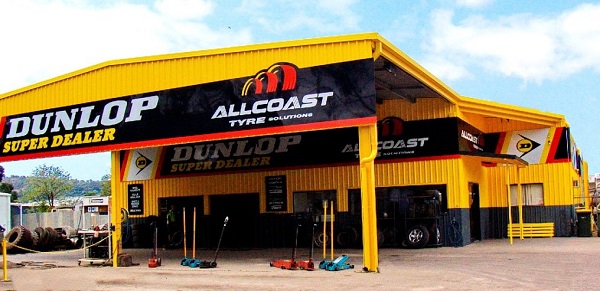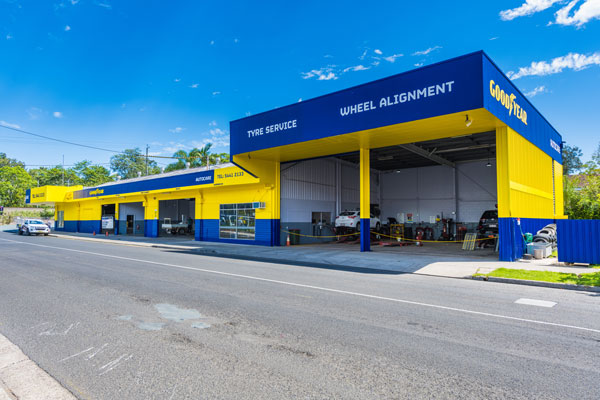
Tyre Safety 101: Understanding Tread Depth and When to Replace Your Tyres
Tuesday 18 April 2023
Back to Latest News
What is tread depth and why is it important for tyre safety?
At All Coast Tyres, we're committed to promoting tyre safety and helping our customers make informed decisions about their tyres. Tread depth is a key factor that plays a critical role in tyre safety.
Tread depth refers to the depth of the grooves in the tyre's tread pattern. The tread is designed to provide traction and help maintain control on the road, especially in wet or slippery conditions. When the tread wears down, it becomes more difficult for the tyre to grip the road, which can increase the risk of skidding, hydroplaning, or losing control of the vehicle.
That's why it's important to monitor your tyre's tread depth and ensure that it meets the legal minimum requirements. In Australia, the legal minimum tread depth requirement for tyres is 1.5 millimetres across the entire tread width and in all grooves around the tyre. Driving with tyres that have less tread than this is not only unsafe but also illegal.
In addition to ensuring that your tyres meet the legal requirements, it's also important to understand how different types of tread patterns can affect tyre performance. There are various types of tread patterns, each designed for specific driving conditions and vehicle types. For example, some tyres have a directional tread pattern that is designed to enhance wet-weather performance by channelling water away from the tyre's surface. Other tyres have a symmetric or asymmetrical tread pattern that is designed for all-season performance.
How to check your tyre's tread depth
Now that you understand the importance of tread depth, the next step is to learn how to check your tyre's tread depth. Fortunately, it's a quick and easy process that you can do yourself with a few simple tools.
One way to check your tyre's tread depth is to use a tread depth gauge. This small tool measures the depth of the grooves in your tyre's tread. To use a tread depth gauge, simply press the gauge into the groove and read the measurement on the gauge's scale. Repeat this process at several points around the tyre to ensure that the tread wear is even.
Another way to check your tyre's tread depth is to use the "Crown Jewels Test". This is a simple and cost-effective method that involves using a ten cent coin to measure the depth of the tyre's grooves. To perform the Crown Jewels test, insert a 10c coin into the groove with the wave of hair over Queen Elizabeth's forehead facing down. If the you can see any part of the front of her crown, then your tyre's tread is too worn and it's time to replace your tyres. (If you have a new 10c coin with King Charles on it, give us a call and we'll update this page!)
It's important to note that checking your tyre's tread depth is not a one-time task - it's something that you should do regularly, especially before long trips or during inclement weather conditions. If you notice that your tyres' tread depth is below the legal minimum requirement, or if you see any signs of irregular wear or damage, a professional must inspect your tyres.
Understanding the legal minimum tread depth requirements
As we've mentioned earlier, the legal minimum tread depth requirement for tyres in Australia is 1.5 millimetres across the entire tread width and in all grooves around the tyre. This requirement applies to all vehicles registered in Australia, and driving with tyres that have less tread than this is both unsafe and illegal.
It's important to understand that the legal minimum tread depth requirement is not just a guideline - it's a safety standard that helps to reduce the risk of accidents and improve road safety for all drivers. Worn or bald tyres can significantly increase stopping distances, reduce traction and grip on the road, and make it more difficult to control your vehicle, especially in wet or slippery conditions.
It's also worth noting that the legal minimum tread depth requirement is a minimum standard, and it's recommended to replace your tyres before they wear down to this point. Many tyre manufacturers recommend replacing your tyres when the tread depth reaches 3 millimetres or even earlier in some cases. Additionally, tyres that are approaching the end of their lifespan may also show signs of wear, cracking, or damage, which can further compromise their safety and performance.
Signs that it's time to replace your tyres
While checking your tyre's tread depth is an important part of tyre maintenance, it's not the only indicator that it's time to replace your tyres. There are several other signs that you should look out for to determine if your tyres need replacing.
One of the most obvious signs that it's time to replace your tyres is if you notice any visible damage, such as cuts, punctures, bulges, or cracks. These types of damage can compromise the structural integrity of your tyres and increase the risk of blowouts or other safety issues. If you notice any damage to your tyres, it's important to have them inspected by a professional as soon as possible.
Another sign that it's time to replace your tyres is if you notice any signs of uneven wear. Uneven wear can occur for a variety of reasons, such as improper inflation, misalignment, or worn suspension components. If you notice that your tyres are wearing unevenly, it's important to have them inspected and corrected to prevent further damage and ensure optimal performance.
Finally, if you notice any changes in your vehicle's handling or performance, it could be a sign that your tyres are worn or need replacing. For example, if you notice that your vehicle is pulling to one side, vibrating, or making unusual noises, it could indicate that your tyres are worn or misaligned. It's important to have these issues addressed as soon as possible to avoid any safety risks.
Tips for prolonging the life of your tyres
Taking care of your tyres can not only keep you safe on the road but also prolong the lifespan of your tyres, saving you money in the long run. Here are some tips for prolonging the life of your tyres:
- Regularly check your tyre pressure - Properly inflated tyres can improve fuel efficiency, and handling, and extend the life of your tyres. Check your tyre pressure at least once a month, and always adjust the pressure to the manufacturer's recommended level.
- Rotate your tyres - Rotating your tyres can help ensure even wear and prolong the lifespan of your tyres. The frequency of tyre rotation can vary depending on the type of vehicle and driving conditions, but as a general rule, it's recommended to rotate your tyres every 5,000 to 8,000 kilometres.
- Avoid overloading your vehicle - Overloading your vehicle can put additional stress on your tyres, leading to premature wear and tear. Always follow the manufacturer's recommendations for your vehicle's maximum load capacity.
- Avoid harsh driving conditions - Driving on rough roads, gravel, or other harsh conditions can accelerate tyre wear and damage. Try to avoid these conditions whenever possible, and take extra caution when driving on uneven or poorly maintained roads.
- Get regular wheel alignments - Misaligned wheels can cause uneven tyre wear and reduce the lifespan of your tyres. Getting a wheel alignment can help ensure that your tyres wear evenly and last longer.
By following these tips, you can help prolong the life of your tyres and keep your vehicle safe and performing at its best. At All Coast Tyres, we offer a range of tyre services, including tyre pressure checks, rotations, and wheel alignments, to help ensure the safety and longevity of your tyres.
When in doubt, consult a professional
When it comes to tyre safety, it's always better to err on the side of caution. If you're ever in doubt about the condition of your tyres or whether it's time to replace them, it's always a good idea to consult a professional.
At All Coast Tyres, our team of experienced technicians can help you assess the condition of your tyres, recommend the best course of action, and perform any necessary services to keep your vehicle safe and performing at its best.
We have four convenient locations across the Sunshine Coast - Maroochydore, Nambour, Yandina, and Gympie - so you can easily find a location near you. Our team is committed to providing high-quality, reliable tyre services, including tyre inspections, replacements, rotations, and alignments.
In addition to our wide range of tyre services, we also offer competitive prices and a customer-focused approach to ensure that you get the best value and experience possible. When you choose All Coast Tyres, you can trust that you're getting expert service and advice from a team that truly cares about your safety and satisfaction.
So, if you're in doubt about the condition of your tyres, don't hesitate to contact All Coast Tyres today. Our team is always happy to help and provide the expert advice and service that you need to stay safe on the road.




